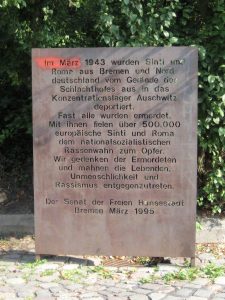 I’m currently in Bremen for Jazzahead!, the Trade Fair and Showcase Festival, which, over the last 11 years, has grown to become the largest international gathering of jazz organisations, promoters and artists. When I last attended the event in 2011, the trade fair was punctuated by a handful of daytime performances and an evening concert programme that showcased jazz of a particular country.
I’m currently in Bremen for Jazzahead!, the Trade Fair and Showcase Festival, which, over the last 11 years, has grown to become the largest international gathering of jazz organisations, promoters and artists. When I last attended the event in 2011, the trade fair was punctuated by a handful of daytime performances and an evening concert programme that showcased jazz of a particular country.

This year, the partner countries remain (the opening night was Swiss jazz night) and take centre stage, however, the showcases have been expanded and the event has been ‘festivalised’ (to coin George McKay’s term) to the extent where jazz occupies venues across the city for four intensive days, with other events programmed in the weeks leading up to the event. Whilst festival events staged within the convention centre and surrounding hotels could be described as placeless in nature – as an audience member you could be in any world city – the adjoining Kulturzentrum Schlachthof offers the most interest in relation to CHIME’s objectives.
 The former slaughterhouse was built in 1892 and prevented from demolition in the late 1970s. Since its transformation in the 1990s, it has become the largest cultural centre in Bremen, an impressive post-industrial venue with bars, a cafe, and an amazing performance space that is ideal for jazz and improvised music. In addition to its industrial heritage, the building is also associated with Europe’s troubled history.
The former slaughterhouse was built in 1892 and prevented from demolition in the late 1970s. Since its transformation in the 1990s, it has become the largest cultural centre in Bremen, an impressive post-industrial venue with bars, a cafe, and an amazing performance space that is ideal for jazz and improvised music. In addition to its industrial heritage, the building is also associated with Europe’s troubled history.
In 1943, the slaughterhouse grounds were used by the Nazis in their deportation of Roma communities from Bremen to Auschwitz, where most were murdered.
A plaque was erected outside the Schlachthof in 1995 to commemorate these atrocities.
plaque was erected outside the Schlachthof in 1995 to commemorate these atrocities.
As a cultural centre, the Schlachthof engages with Bremen’s cultural heritage head on and, in this context, jazz provides the perfect vehicle both to engage with the heritage of the building literally and symbolically, to re-use the site and to energise the space. In many ways, the music works as a form of cultural palimpsest where traces of history remain but the sounds created in the venue confront the building; encouraging audiences to think about the problematic past, to reflect on the resilience of humanity and the processes of healing and renewal, and to experience the power of music in bringing people together.





